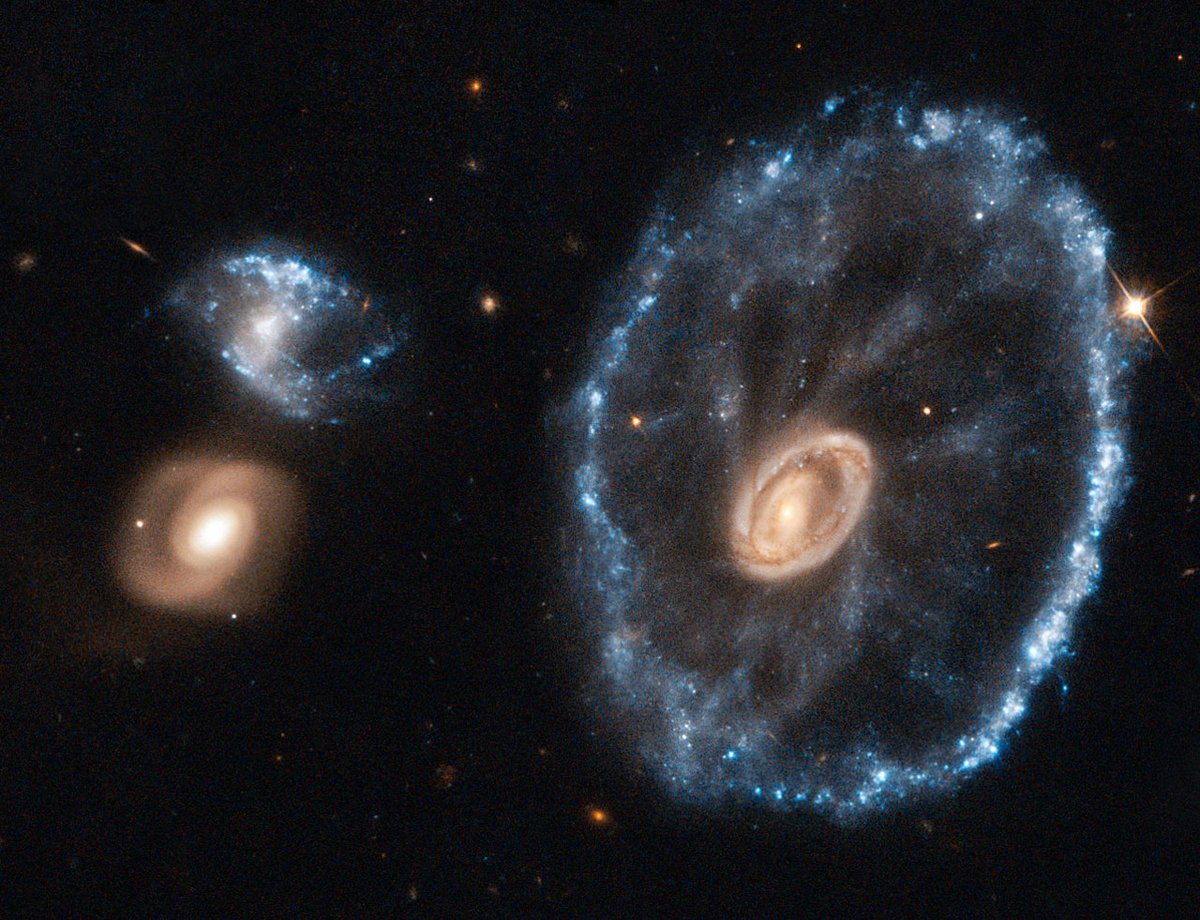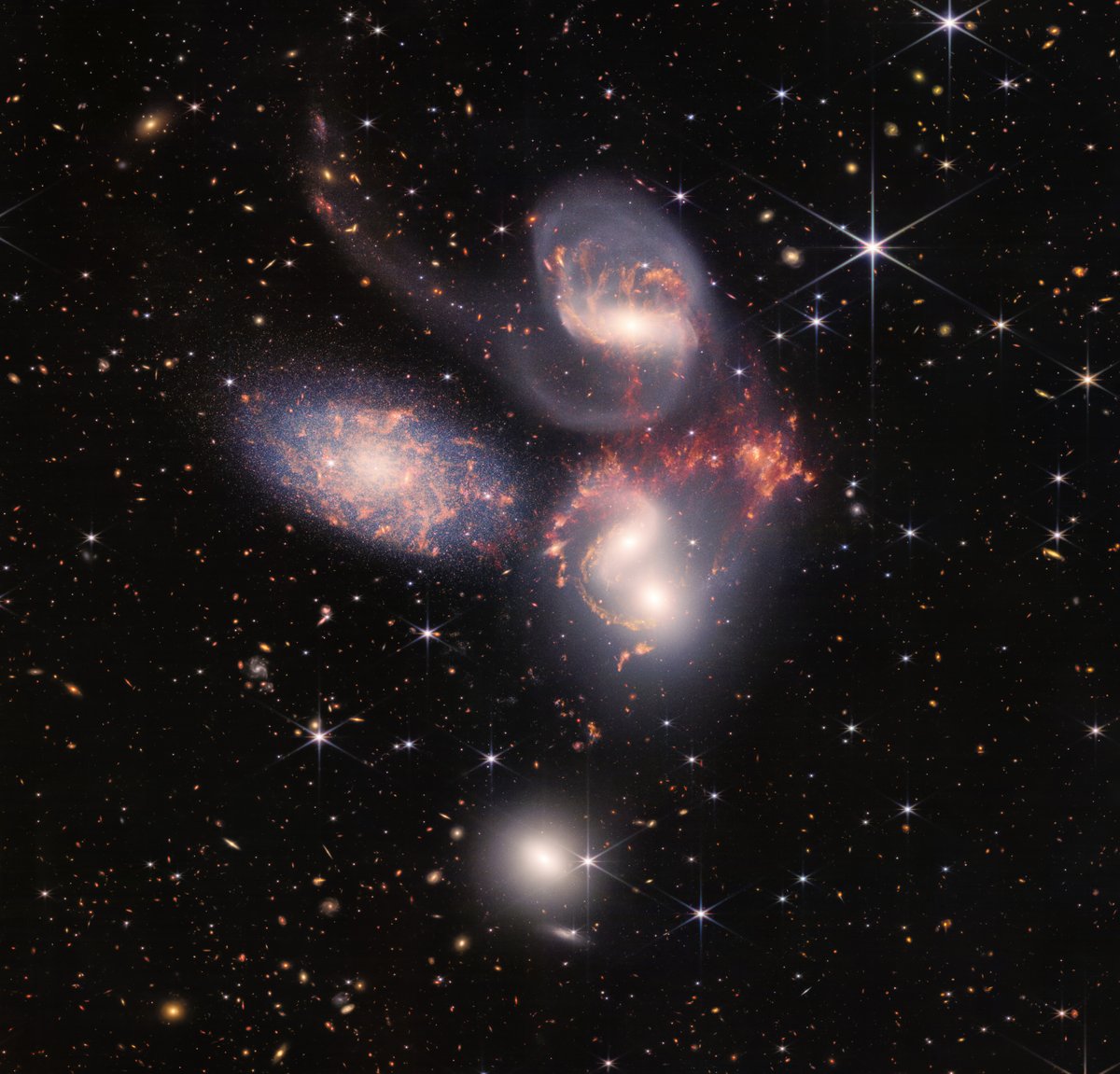
1/ This new Webb picture of the month shows IC 1623, a pair of interacting galaxies, plunging into one another. Their collision has ignited a spate of star formation creating new stars at a rate above 20 times that of the Milky Way. Read more 👉 esawebb.org/images/potm221… and 👇 

2/ Astronomers used Webb's #MIRI, #NIRSpec, and #NIRCam instruments to investigate IC 1623. This will allow scientists to unravel the interactions in galactic ecosystems. These observations are also accompanied by data from other observatories, like @HUBBLE_space #BFFinSpace 

@HUBBLE_space 3/ The luminous core of this merger is very bright and highly compact, so much so that Webb’s diffraction spikes appear atop the galaxy in this image. The 8-pronged diffraction spikes are created by the interaction of starlight with the physical structure of the telescope.
@HUBBLE_space 4. Have fun with our interactive tool here: esawebb.org/images/compari… 📷 @esa @ESA_Webb @NASA @csa_asc , L. Armus & A. Evans
Acknowledgement: R. Colombari
Acknowledgement: R. Colombari
• • •
Missing some Tweet in this thread? You can try to
force a refresh













